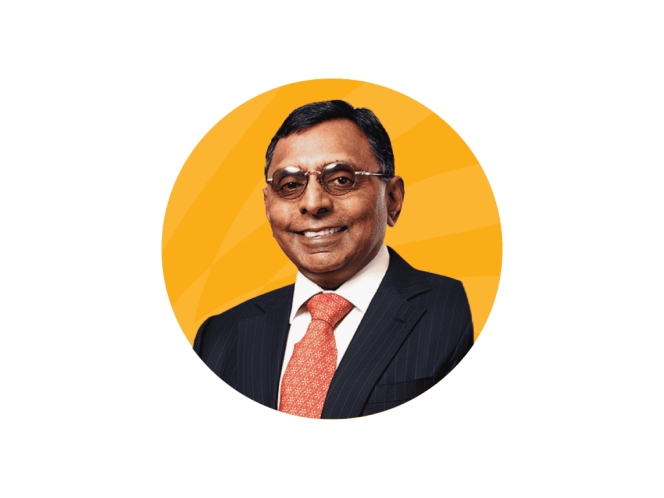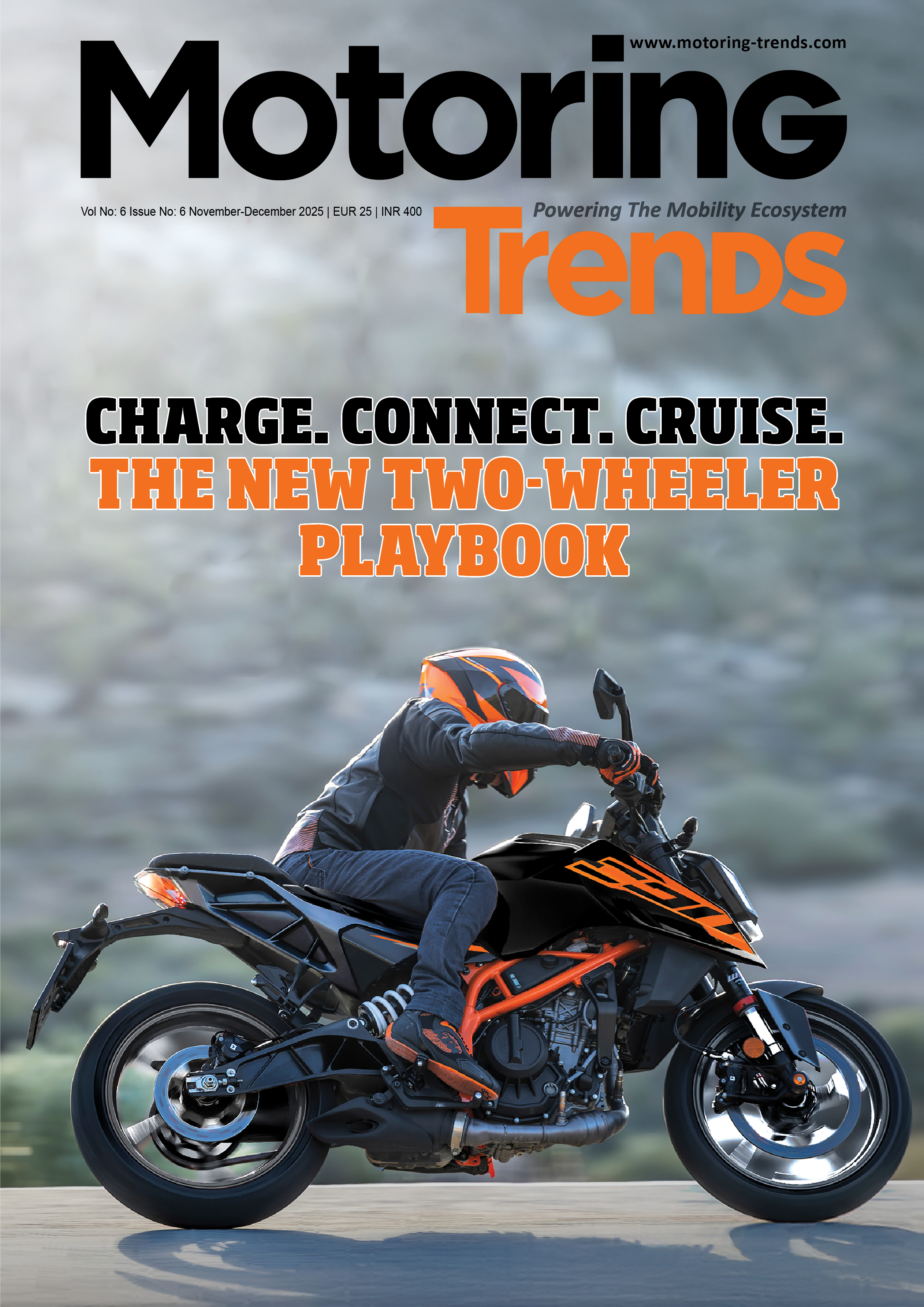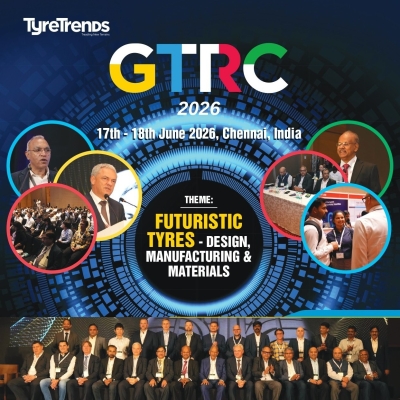- Budget 2025
- post budget reaction
- auto industry
- EV
- leaders
- manufacturing sector
- automotive
- production
- engineering
- mechanical
- electrical
- electronics
Union Budget 2025-26: A Game-Changer for Electric Mobility, Start-ups And MSMEs
- By Gaurav Nandi
- February 04, 2025

The Union Budget 2025-26 has been widely welcomed by industry leaders, particularly for its transformative impact on the electric mobility and start-up ecosystems. Key highlights include the exemption of basic customs duty (BCD) on 35 capital goods critical for EV battery manufacturing and tax exemptions on essential materials like lithium and cobalt, significantly lowering production costs and promoting local supply chains.
The budget also emphasised boosting the MSME sector through increased credit access and skill development, alongside measures supporting startups, gig workers and cleantech manufacturing. Investments in infrastructure, public-private partnerships and tax relief for the middle class are expected to stimulate consumer spending and economic growth.
Overall, the budget is seen as a strong step toward making India a global leader in sustainable mobility, innovation and self-reliant manufacturing.
Partner and Automotive Tax Leader at EY India Saurabh Agarwal noted, “The proposed income tax cuts could boost the middle class's spending power, potentially increasing demand for two-wheelers, three-wheelers, and small cars. Further, the government's commitment to fostering a sustainable automotive ecosystem is clearly demonstrated through its strategic initiatives, which are poised to deliver substantial benefits to the EV industry. The budget astutely emphasizes the complete exemption of Basic Customs Duty (BCD) on cobalt powder and waste, scrap of lithium-ion battery, lead, zinc, zirconium, copper, etc. These pivotal measures are designed to ensure a reliable domestic supply of essential critical minerals for manufacturing and to stimulate job creation across India.”
The Central Government has significantly increased budgetary allocations with PME E-Drive receiving INR 40 billion, auto PLI being bolstered by INR 22.18 billion and advanced chemistry cell PLI benefiting from an infusion of INR 1.55 billion.
Commenting on the newly introduced budget, Mercedes-Benz India Managing Director Santosh Iyer said, “India has long been regarded as a niche garden with high fences; however, this budget is expected not only to enrich the garden by stimulating consumption and strengthening MSME sector, but also lowering the fences through tariff rationalisation and adoption of international practices on transfer pricing, with a clear commitment to enhanced global trade integration. This will send a strong positive signal to the industry, reinforcing confidence in the ‘India Growth Story’, paving the way for sustained investment and future expansion. The announcement of setting up of National Manufacturing Mission’s for clean technology manufacturing and support to domestic EV battery manufacturing is a positive step towards strengthening EV ecosystem. We also welcome the setting up of a high-level committee to evaluate regulatory reforms which will enhance ease of doing business in long term.”
Volkswagen India Brand Director Ashish Gupta, averred, “The Union Budget presents a forward-thinking roadmap for strengthening India’s manufacturing ecosystem with a clear emphasis on clean technology, skill development and infrastructure growth. By prioritizing these areas, along with manufacturing, India is advancing toward a circular economy—where investments, innovation, and sustainable practices drive long-term growth. Infrastructure growth through public-private partnerships and capital expenditure incentives will pave the way for India to become a globally competitive manufacturing hub.”
Commercial vehicle players have also lauded the budget. Ashok Leyland Executive Chairman Dheeraj Hinduja noted, “The finance minister has presented a clear, growth-driven budget that aligns with the Prime Minister’s vision of fostering a competitive and resilient India with inclusive growth by investing in people, economy and innovation. Additionally, the government's strong commitment to green mobility is expected to create new avenues for innovation and growth across the country.”
Daimler India Commercial Vehicles Managing Director Satyakam Arya iterated, “The Union Budget 2025-26 will be a game changer for India and the mobility sector, helping us become a global leader in EV manufacturing and sustainable transportation. The emphasis on localising battery production will create technological advancements and generate more jobs. Also, with mining identified as one of the six domain areas for transformative reforms and the introduction of the State Mining Index, we see major growth potential for the sector in the coming years.”
EKA Mobility Chairman Sudhir Mehta said, “These different programmes demonstrate a strong commitment to sustainability, innovation and greater industrial competitiveness, setting the framework for transformative progress in a variety of critical sectors. The nation's energy revolution will be dependent on funding for small modular reactors and the government's target of 100 gigawatts of nuclear power by 2047. Long-term growth can be solidified by financial agreements that allow governments to expand their borrowing capacity, as well as indirect taxation initiatives targeted at increasing domestic value creation.”
Two-wheeler industry
In a move to avoid protectionist signals, the government has reduced import duties on high-end motorcycles. This decision aligns with India's commitment to lowering trade barriers and could influence the premium motorcycle segment.
With electric mobility remaining the focus point of the automotive sector, the budget has made pivotal efforts for bolstering manufacturing. Drawing on that, companies operating in the EV two-wheeler space has welcomed the developments with open arms.
Kolkata-based Motovolt Mobility Founder Tushar Choudhary said, “"The recent budget has delivered a promising outlook for India’s electric vehicle industry, especially with the reduction in BCD on capital goods related to EV manufacturing. This move will help lower production costs, making EVs more affordable for consumers and encouraging higher sales. Aligned with the National Manufacturing Mission, the budget’s focus on rationalising customs tariffs signals the government's intent to localize high-value production and reduce dependency on imports. Additionally, the exemption on critical minerals like lithium is a significant step toward easing the supply of vital components for EV batteries, further lowering costs and boosting domestic manufacturing. Efforts to localize EV components like batteries, motors and controllers will help reduce upfront costs which would further strengthen India’s EV Ecosystem giving the EV sector the ability to penetrate the Indian markets.”
Chennai-based high performance EV two-wheeler manufacturer Raptee HV’s Co-founder Dinesh Arjun said, “The Finance Minister’s focus on nurturing and investing in innovation is a commendable step toward accelerating new technologies that will shape our future. The allocation of a Deep Tech Fund will further strengthen India’s industrial ecosystem, fostering a globally competitive, tech-driven economy.”
Drawing on the same lines, Revamp Moto Chief Executive Officer Pritesh Mahajan said, “"The National Manufacturing Mission’s support for clean tech manufacturing is a game-changer for India's sustainable future. I firmly believe that this initiative will accelerate the growth of domestic EV battery and solar panel production, reducing our reliance on imports while strengthening India's position as a global leader in green technology. The additional INR 100 billion investment underscores the government’s commitment to fostering innovation, job creation and energy security.”
Welcoming the budget, Odysse Electric Founder Nemin Vora said, “We appreciate the Union Budget 2025, which underscores the government's commitment to fostering economic growth and empowering citizens. The adoption of progressive policies, particularly within the existing tax framework, is a key step in enhancing disposable income and driving consumer spending. This decision will significantly impact consumer-driven sectors, especially the two-wheeler industry. With more disposable income in the hands of consumers—particularly the middle class—purchasing power is set to rise. As a result, more individuals will be encouraged to invest in personal mobility solutions like two-wheelers.”
Associates talk
The boost towards electric mobility is also poised to impact the entire ecosystem. DriveX Founder Narain Karthikeyan noted, “The 2025 Budget is a strong step towards inclusive economic growth, bringing significant benefits across all sections of society. The increase in MSME turnover limits, along with enhanced credit access and intensive skill-development programmes will fuel entrepreneurship, business expansion and youth employment. We also welcome the government’s recognition of the gig economy, with steps to regularise support for gig workers and improve their access to credit facilities. With enhanced credit guarantee cover for MSMEs and startups, particularly in focus sectors crucial for Atmanirbhar Bharat, the budget lays a strong foundation for sustained growth and economic resilience.”
Commenting on the same lines, Taabi Mobility Limited Chief Executive Officer Pali Tripathi said, “The transformation of India Post into a large-scale logistics network, along with greater accessibility to PM Gati Shakti data for the private sector, will significantly enhance connectivity, particularly in hinterland regions. These initiatives will drive smarter freight management, optimise last-mile delivery, and make transportation more seamless and sustainable.”
On the aggregator front Rapido Chief Financial Officer Vivek Krishna said, “The Union Budget 2025-26 has proposed a review of both financial and non-financial sector regulations that are expected to help businesses perform better with lesser compliances. It reflects a bold vision for Viksit Bharat, one that empowers the gig economy, promotes sustainable mobility, and catalyses digital innovation. We welcome the social security scheme and healthcare support announced for gig workers. The e-shram portal registration and the PM Jan Arogya Yojana will be a game-changer in prioritising the well-being of gig workers, including our captains. It’s also encouraging to see the government’s effort in promoting green mobility by incentivising local EV component manufacturing.”
Alluding to how the manufacturing push will bolster the electric mobility segment, Kinetic Engineering Managing Director Ajinkya Firodia said, “These steps noted in budget will significantly enhance India’s position as a global hub for electric mobility and clean energy technologies. In addition, the focus on expanding charging infrastructure, incentivising electric buses for public transport and ramping up domestic battery production marks a decisive move in India’s EV revolution. The continued subsidies under the FAME scheme will make EVs more affordable and accessible to consumers. This strong policy push not only paves the way for rapid adoption of EVs but will also create jobs, reduce dependence on fossil fuels and position India as a global leader in sustainable transportation.”
Drawing on the same lines, Tata Technologies Managing Director Warren Harris said, “The establishment of five National Centres of Excellence for Skilling is a pivotal move in building a future-ready workforce. This initiative resonates with our commitment to engineering a better future for India's youth through investment in in-demand training programs across Industry 4.0, IoT, and advanced manufacturing and collaborating with state governments to upgrade ITIs into technology hubs.”
TapFin Co-founder Aditya Singh said, “The budget’s emphasis on cleantech manufacturing, including incentives for electric vehicle batteries and the additional 10 GW support for grid-scale batteries, signals a significant shift for India’s electric mobility sector. Strengthening domestic production will foster innovation, reduce dependence on imports, and open new growth opportunities.”
Image for representative purpose only
- Hagerty UK
- Vehicle Excise Duty Exemption
- VED Exemption
- Historic & Classic Vehicles Alliance
- Classic Cars
UK Chancellor Maintains Vehicle Excise Duty Exemption For Classic Cars
- By MT Bureau
- November 27, 2025

The UK's cherished classic car community can finally breathe a collective sigh of relief. The decisive action by Chancellor Rachel Reeves in the Autumn Budget to maintain the Vehicle Excise Duty (VED) exemption for vehicles over 40 years old has ended a prolonged period of uncertainty, securing a stable future for this vital sector. Mark Roper, Managing Director of Hagerty UK, welcomed this clarity, noting that the confirmed freeze on fuel duty further solidifies a supportive environment for owners. He underscores that this is a significant win for the GBP-7.3-billion industry that supports over 100,000 jobs and contributes GBP 3 billion annually to the UK economy, all while championing an inherently sustainable form of motoring.
This perspective on sustainability is reinforced by Dale Keller, CEO of the Historic & Classic Vehicles Alliance (HCVA), who affirms that the tax exemption logically aligns with environmental objectives. Classic vehicles, preserved as moving heritage, have a negligible lifecycle carbon footprint compared to new manufacturing and are driven infrequently. The original principle of the exemption remains valid, as applying a modern tax to these rarely used assets would be inequitable.
Alongside the VED news, the Chancellor confirmed the continuation of the MOT exemption for classic cars, though this will remain under review. On this point, Roper of Hagerty UK strikes a note of caution, observing that many within the industry advocate for an annual roadworthiness check. He notes that a great number of responsible classic owners voluntarily submit their vehicles for an MOT each year, valuing the independent assurance of safety and mechanical integrity it provides.
For Hagerty UK, as a specialist insurer deeply embedded in this world, the government’s affirmation is a powerful endorsement of the sector's cultural and economic value. Through its vibrant Clubhouse at Bicester Heritage and unique events like RADwood, Hagerty is actively fostering this passionate community. Similarly, the HCVA continues its mission to protect and promote the diverse ecosystem of specialists, restorers and businesses that form the backbone of this multi-billion-pound industry, ensuring its legacy for generations to come.
Mahindra Racing Extends Formula E Involvement With GEN4 Manufacturer Commitment
- By MT Bureau
- November 26, 2025

Mahindra Racing has solidified its long-term future in electric motorsport by confirming its manufacturer commitment to the GEN4 era of the ABB FIA Formula E World Championship, starting in 2026/27. This announcement, made during the unveiling of its new M12Electro race car in India, extends a relationship that began in 2013 when Mahindra stood as both a founding team and the first OEM to join the all-electric series.
The team's current trajectory underscores the significance of this pledge. Following a dramatic 18-month transformation under CEO and Team Principal Frederic Bertrand, Mahindra Racing has evolved from a backmarker into a consistent front-runner. This resurgence was powered by the redesigned M11Electro, in which drivers Nyck de Vries and Edoardo Mortara collectively secured five podium finishes in Season 11, catapulting the squad to a stellar fourth place in the world championship. The newly launched M12Electro is the intended vehicle to maintain this status as a top-five contender and a regular threat for podium positions in the forthcoming season.
The technical landscape for GEN4 promises to further electrify the sport. The next-generation cars will boast a peak race power of 450 kw, with a potent 600 kw available in ATTACK MODE to empower aggressive overtaking. Enhanced strategic possibilities will come from a race energy capacity of up to 55 kWh and a remarkable 700 kw of regenerative braking. In a continued commitment to sustainability, the GEN4 chassis will be produced from 100 percent recyclable materials and will feature two distinct aerodynamic configurations – high-downforce for qualifying and low-downforce for races – to optimise performance.
Mahindra's ambition is to leverage this new regulatory chapter to build on its renewed momentum, chase incremental gains and establish itself as a confirmed championship contender against elite manufacturers like Porsche and Jaguar. This competitive platform also serves a broader purpose, aligning with the Mahindra Group’s sustainability initiatives. The team, the first in Formula E to earn the FIA’s Three-Star Sustainability Accreditation, has embarked on its ‘Planet Positive’ programme. This initiative is dedicated to driving positive impact in communities and economies, accelerating climate solutions and using the intersection of sport and technology as a catalyst for a better future.
R Velusamy, Chairman, Mahindra Racing, said, "Mahindra Racing has always been a symbol of our commitment to the Race to Road journey – where cutting-edge innovation on the track directly shapes the clean, intelligent and high-performance mobility solutions we deliver to customers. Formula E is a powerful platform for innovating new technology, giving us the ability to experiment, learn and advance electric powertrain efficiency, sustainable materials and software intelligence. As we step into the GEN4 era, our ambition only grows stronger. Continuing this journey till 2030 is a testament to our belief in the sport, in electrification and in India’s role in leading global sustainable mobility. We are proud to champion this future, and GEN4 represents an exciting new chapter for Mahindra Racing and the Mahindra Group.”
Frederic Bertrand, Team Principal, Mahindra Racing, said, “I’m delighted to share this announcement that Mahindra Racing will remain in Formula E as a manufacturer for the GEN4 era. As a team, we have been on a fantastic journey over the past two seasons. What we have built and achieved as a group has been exceptional, and with this announcement, we now have the platform to keep growing and developing and achieve even greater success in the future. None of this would be possible without our colleagues across the Mahindra Group. They have bought into the project and the vision, and we will keep working hard to not only make India proud but also showcase exactly why it has the potential to be a major player on the world stage in the automotive and technology industries. Their enthusiasm to ‘Scream Electric’ is hugely inspiring to the whole team, and we will continue to represent them with pride in this next exciting chapter of our Formula E story in the coming years.”
Jeff Dodds, CEO, Formula E, said, “We’re thrilled to confirm Mahindra’s long-term commitment to the GEN4 era of the ABB FIA Formula E World Championship. As one of our founding teams, Mahindra has been with us since the very beginning, consistently championing electric racing and innovation. Their bold vision for sustainable mobility and continued investment in advanced EV technology perfectly align with Formula E’s mission. Mahindra’s enduring presence not only strengthens our position in a key market but also reinforces Formula E’s role as a global platform for driving positive change. We’re excited to see what they’ll achieve in this next chapter of performance and progress.”
Marek Nawarecki, Senior Circuit Sport Director, FIA, said, “Following the GEN4 reveal and the really positive sentiment reported, we are pleased to announce Mahindra as the sixth manufacturer to commit to Formula E’s GEN4 era. This is testament to the relevance of the road map we are implementing in Formula E for OEMs. GEN4 underscores just how far the ABB FIA Formula E World Championship has come since 2014 and we are looking forward to continuing this journey with Mahindra as one of the founding teams and partners.”
Mahindra Charts Aggressive Decade Of Growth Across Auto, Farm, CV And Last-Mile Mobility Businesses
- By MT Bureau
- November 21, 2025

Mumbai-headquartered conglomerate Mahindra Group has unveiled an ambitious long-term roadmap across its core mobility and equipment businesses, detailing plans for accelerated growth in the automotive, farm equipment, commercial vehicle and last-mile mobility segments.
The strategy, presented at its Investor Day 2025, underscores the Group’s intent to leverage India’s expanding economy while deepening global market participation.
Mahindra expects its consolidated automotive business to grow 8x between FY2020 and FY2030, driven primarily by a stronger push in sports utility vehicles (SUVs) and light commercial vehicles (LCVs).
The company aims to become the world’s fastest-growing SUV brand. Its product strategy is rooted in new-age platforms such as INGLO and NU_IQ, enhanced digital architecture under MAIA and Adrenox, and continued investment in safety and performance.
At present, Mahindra holds more than 26 percent revenue share in India’s SUV segment as of the first half of FY2026. Strong consumer traction for models including the Thar, XUV700, XUV3XO and the Born Electric (BE) series is expected to support the company’s international expansion to right-hand-drive and left-hand-drive markets across Europe, Australia, Africa and other regions.
Strengthening leadership in LCV segment
The LCV business, where Mahindra commands 54.1 percent volume share in vehicles under 3.5 tonnes (as of H1 FY2026), is set to be another pillar of growth. The product range has broadened through the Supro, MaXX and Veero platforms, including CNG and electric variants. The company is also preparing for wider adoption of lifestyle pickups, led by the upcoming Global Pik Up.
Mahindra’s LCV strategy emphasises best-in-class total cost of ownership, reduced downtime, enhanced comfort and technology integration, with the segment also targeted for eightfold revenue growth during the decade.
Farm business
Mahindra, the world’s largest tractor manufacturer by volume, has outlined plans for threefold revenue growth in its farm equipment division between FY2020 and FY2030.
The Indian tractor market has continued to shift towards higher horsepower models, particularly in the 40–50 HP range. Mahindra aims to consolidate share in this segment through newer platforms including Yuvo Tech+, Swaraj Protek and Next-Gen ranges. Improvements in crop profitability and a more favourable price environment for tractors are expected to support industry expansion.
Mechanisation levels in India remain uneven, with significant headroom in sowing, crop care and harvesting equipment. Mahindra is expanding its farm machinery portfolio while leveraging its extensive dealer network and manufacturing footprint. The division, already a business exceeding INR 10 billion, is poised for rapid scaling.
Mahindra continues to build presence in key global markets:
- Brazil: 8 percent share in the sub-120 HP category, and about 20 percent in sub-50 HP
- North America: more than 10 percent share in sub-20 HP; upcoming launches to deepen penetration
- ASEAN: early progress with about 4 percent share in pilot territories
Electrification, autonomy, precision agriculture and pay-per-use technology services form the next frontier for Mahindra’s farm business.
Targeting Top-Three Position in ILCVs
Following the acquisition of SML Isuzu, Mahindra is advancing a strategy to be among the top-three player in India’s intermediate and light commercial vehicle (ILCV) market. The domestic CV industry is projected to grow from approximately INR 15,000 billion in FY2025 to nearly INR 20,000 billion by FY2031, supported by infrastructure development, logistics modernisation and GST-driven reforms.
Mahindra aims to expand its presence in ILCVs, while pursuing a selective play in the heavy commercial vehicle category. The strategy benefits from combined advantages across product development, sourcing, aggregates, telematics and network coverage. The company expects up to sixfold revenue growth in its CV business during the decade.
Last-Mile Mobility
Mahindra Last Mile Mobility (MLM) is shaping an aggressive electrification-led growth plan, targeting sixfold revenue expansion and a cumulative one million electric vehicles on the road by 2031. EV sales climbed to 78,678 units in FY2025, led by the Treo series, which remains India’s top-selling electric three-wheeler.
The division has:
- Strengthened its engineering capabilities with a 400-member product development team
- Commissioned a new state-of-the-art manufacturing plant in Telangana
- Expanded production capacity two-fold
- Developed proprietary battery, motor and telematics systems
The product roadmap includes advanced electric three-wheelers and electric four-wheelers tailored for last-mile applications, along with plans to expand exports to more than ten markets. Mahindra’s EV fleet has cumulatively saved over 300 million litres of fuel and prevented more than 185 kilo tonnes of carbon dioxide emissions.
Across all mobility segments, Mahindra’s plan is anchored in product leadership, technology integration, capital discipline and global expansion. A stronger focus on electrification, platform consolidation, digital interfaces, manufacturing efficiency and customer-centric service models is expected to underpin the Group’s growth trajectory.
- Murugappa Group
- Arunachalam Vellayan
- Coromandel International
- EID Parry
- EXIM Bank
- Kanoria Chemicals & Industries
- Indian Overseas Bank
Murugappa Group’s Former Chairman Arunachalam Vellayan Passes Away At 72
- By MT Bureau
- November 18, 2025

Chennai-based conglomerate Murugappa Group has announced the passing of Arunachalam Vellayan (1953–2025) following an illness.
Vellayan was the Chairman Emeritus of Coromandel International and the Former Chairman of the Murugappa Group. He is survived by his wife, Lalitha Vellayan, his sons, Arun Vellayan and Narayanan Vellayan, and his grandchildren.
The Former Chairman dedicated several decades to the Group, providing strategic direction across its businesses. His approach to value creation helped strengthen and expand the Group, contributing to its reputation as a respected conglomerate.
He served on the Boards of various Murugappa Group companies, including as Chairman of Coromandel International and EID Parry.
Outside the Group, he served on the Boards of entities such as Kanoria Chemicals & Industries, EXIM Bank and Indian Overseas Bank.






Comments (0)
ADD COMMENT